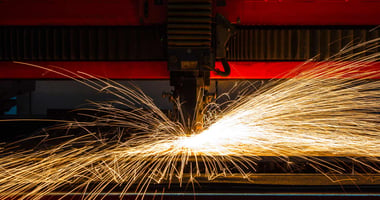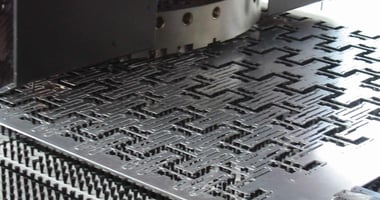In the competitive world of sheet metal manufacturing, efficiency is not just an added advantage,...
What to consider when replacing your nesting software

Every day we and our partners are dealing with companies looking to replace existing software. This will be for a variety of reasons – ongoing costs, ease of use, efficiency, or support. This blog looks at what you as a business need to consider when migrating from one nesting system to another.
Assessing the need for replacement
The journey begins with a critical assessment of your current nesting software's capabilities against your manufacturing demands. Identify factors such as performance bottlenecks, software instability, lack of support for new machine types, inefficient material utilisation, or challenges in passing data or integrating with other systems as key indicators that replacement might not just be beneficial but necessary. This initial step sets the foundation for a replacement process that is driven by the need to enhance operational efficiency, reduce waste, and capitalise on technological advancements.
Where can nesting software save money?
There are three key areas that nesting software can save money:
- Machine: By optimising how the nest is cut you can increase throughput of your CNC. Some technologies such as heat avoidance can improve the quality of parts cut on a laser, while JETCut fly cutting can increase the longevity of your machine by minimising travel and movements. Depending on the size of nests you are creating, different nesting strategies can also make unloading and sorting easier
- Material: Depending on the cost of materials you are working with, this can deliver the swiftest return on investment. Time-based nesting algorithms continually try different nest patterns to generate the most optimum nest.
- Manpower: Automation can drastically simplify and de-skill the process of moving from CAD file to NC code. Having one system that can drive multiple brands or cutting technology ensures that staff don’t have to learn different systems for different machines.
Selecting the right nesting software
Transitioning to new nesting software requires a strategic approach, beyond simply comparing feature lists and pricing. Many find it difficult to see the value in software versus a new CNC machine, where a like-for-like comparison over an existing machine might be as easy as comparing specifications on a brochure. Software is less ‘tangible’ to many, so ensure that you not only have a clear list of required features, but also look at the overall workflow. It’s possible that new systems will work in a way that is alien to your current methods but that doesn’t necessarily make them inferior.
As with any significant software investment, also consider that you are entering into a partnership with the supplier – can they support you with implementation, training and perhaps integration with other data systems further down the line?
Preparing for a seamless transition
A well-defined data migration strategy is essential to ensure that historical data is preserved and seamlessly integrated into the new system.
There are several key areas to consider:
- Legacy data: It is unlikely that all legacy data (such as component and nest files) from your previous system can be imported, but as long as you have the source geometry data this should not matter, and should not therefore be seen as a barrier to switching nesting systems
- Data that will be imported into the software (such as your CAD geometry). Does your new system support the file formats? Have you tested example files? Not all files are equal – for example, DXFs can be constructed in different ways and may require modification during import, especially if additional information is stored in text
- NC code that will be output to the CNC machine. Does it match code that you can currently use? One good test is to provide the new vendor with some samples to nest which you can compare with an identical nest generated from your existing system. Note however that this may not be possible to test beforehand, as part of the implementation may be setup and configuration of areas such as technology tables, which will affect the outputted NC code.
- Data that will be exchanged with ERP, such as passing orders for parts from ERP for nesting, updating ERP with an order’s status, or providing ERP with material requirements based on nests generated
You also need to consider how the data will be exchanged. Each of the above data exchanges will likely be handled differently. It may be as simple as manually opening or saving a file or, ideally, you will have the option of automatic processing, taking one more link out of the human chain of interaction.
Collaboration with your vendor for a custom implementation plan will help identify potential challenges and solutions early in the process, ensuring minimal disruption to your operations. Sending sample data files and allocating time to test any supplied files is also a must, as this will allow testing prior to implementation. Additionally, investing in thorough training programs is crucial to empower your team with the skills required to maximise the benefits of the new software from day one.
Why Choose JETCAM: Your Partner in Technological Transformation
We understand the intricacies of the manufacturing industry and the critical role nesting software plays in your operational success. Our expertise is not just in developing software that generates accurate NC code every time, but in cultivating partnerships that support our clients through every step of their technological journey. We provide not only a product but a commitment to innovation, efficiency, and unmatched customer support.
Choosing to replace your nesting software is a substantial decision, but one that can deliver a swift return on investment. By approaching this process with a strategic mindset, focusing on thorough preparation and leveraging expert guidance, your transition can deliver greater productivity and growth.
%20(Custom).jpg?width=1000&height=252&name=JETCAM%20logo%20(glossy%20effect)%20(Custom).jpg)


